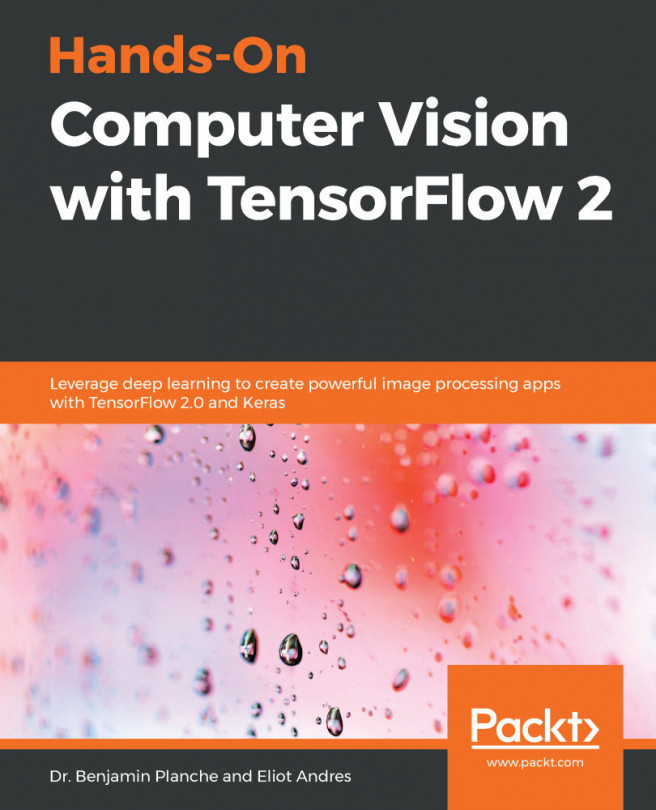A brief introduction to Core ML
With the release of iOS 11 and Core ML, performing inference is just a matter of a few lines of code. Prior to iOS 11, inference was possible, but it required some work to take a pre-trained model and port it across using an existing framework such as Accelerate or metal performance shaders (MPSes). Accelerate and MPSes are still used under the hood by Core ML, but Core ML takes care of deciding which underlying framework your model should use (Accelerate using the CPU for memory-heavy tasks and MPSes using the GPU for compute-heavy tasks). It also takes care of abstracting a lot of the details away; this layer of abstraction is shown in the following diagram:

There are additional layers too; iOS 11 has introduced and extended domain-specific layers that further abstract a lot of the common tasks you may use when working with image and text data, such as face detection, object tracking, language translation, and named entity recognition (NER). These domain...




































































